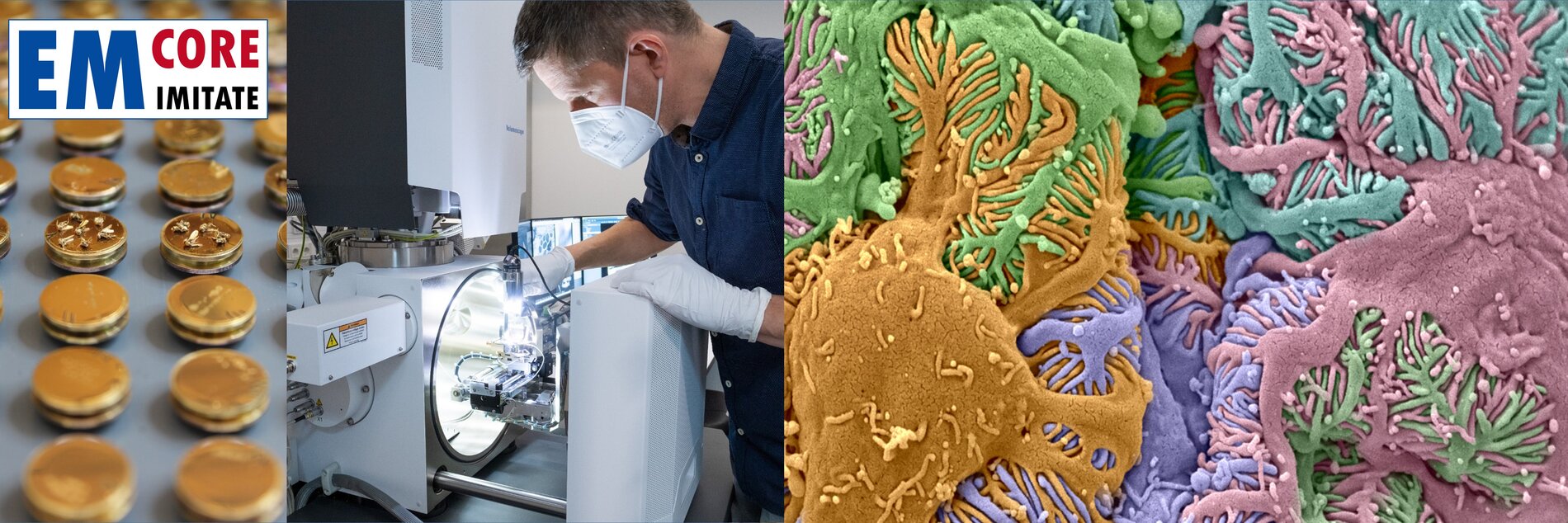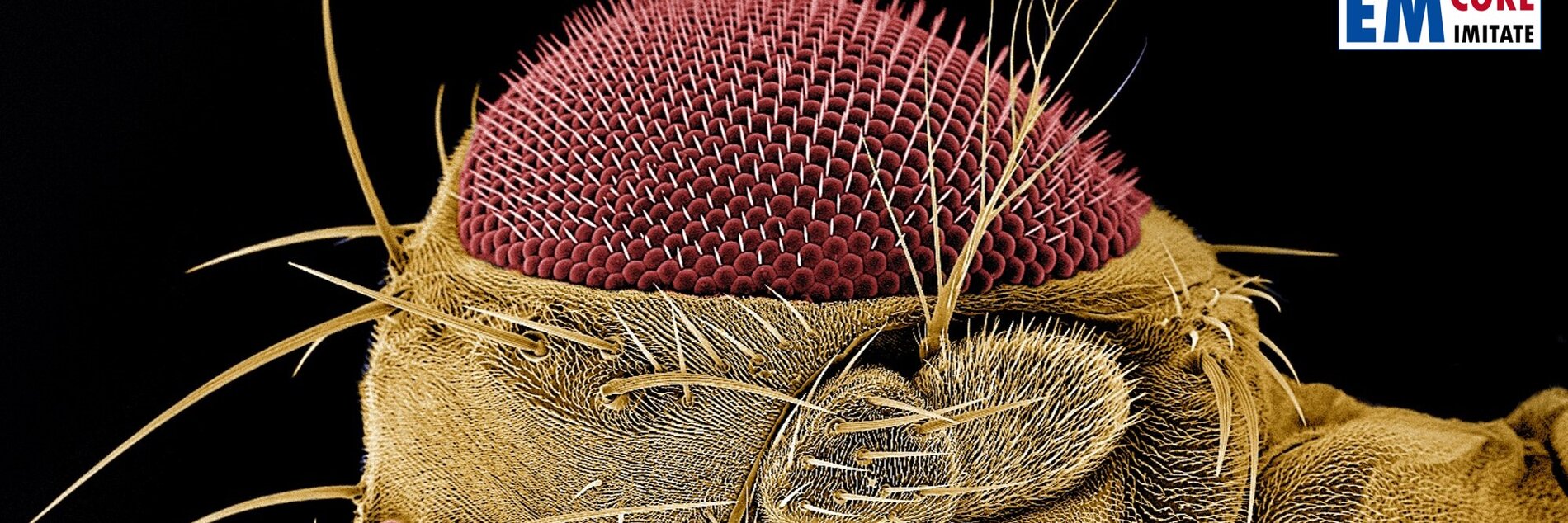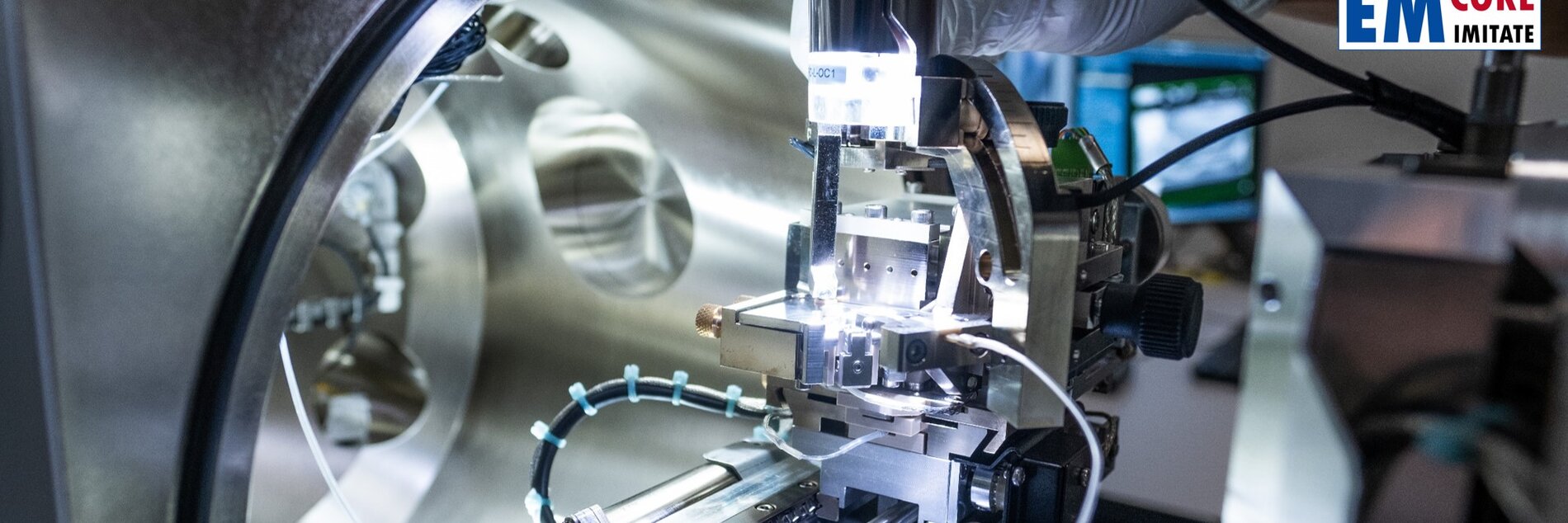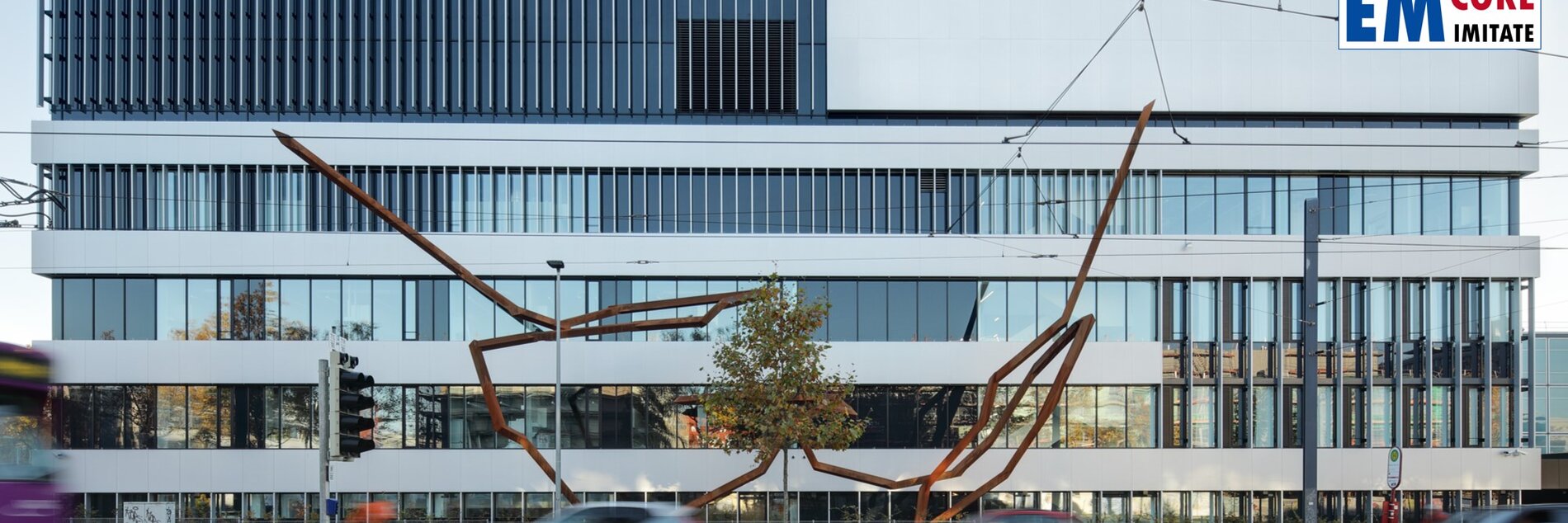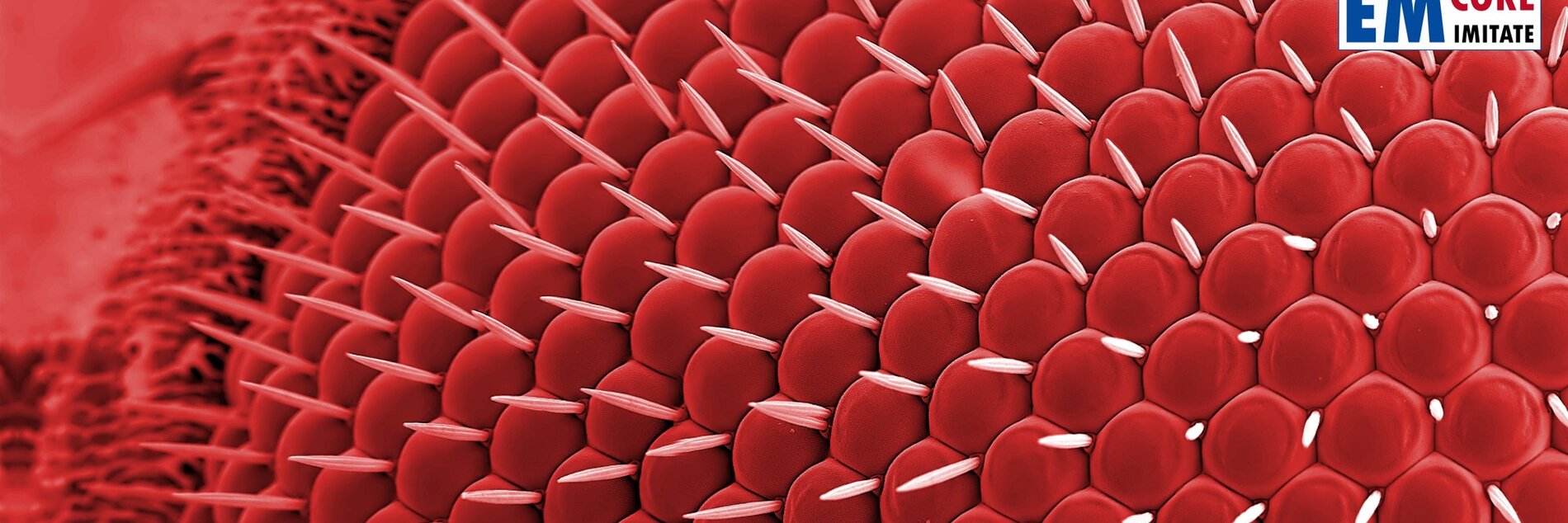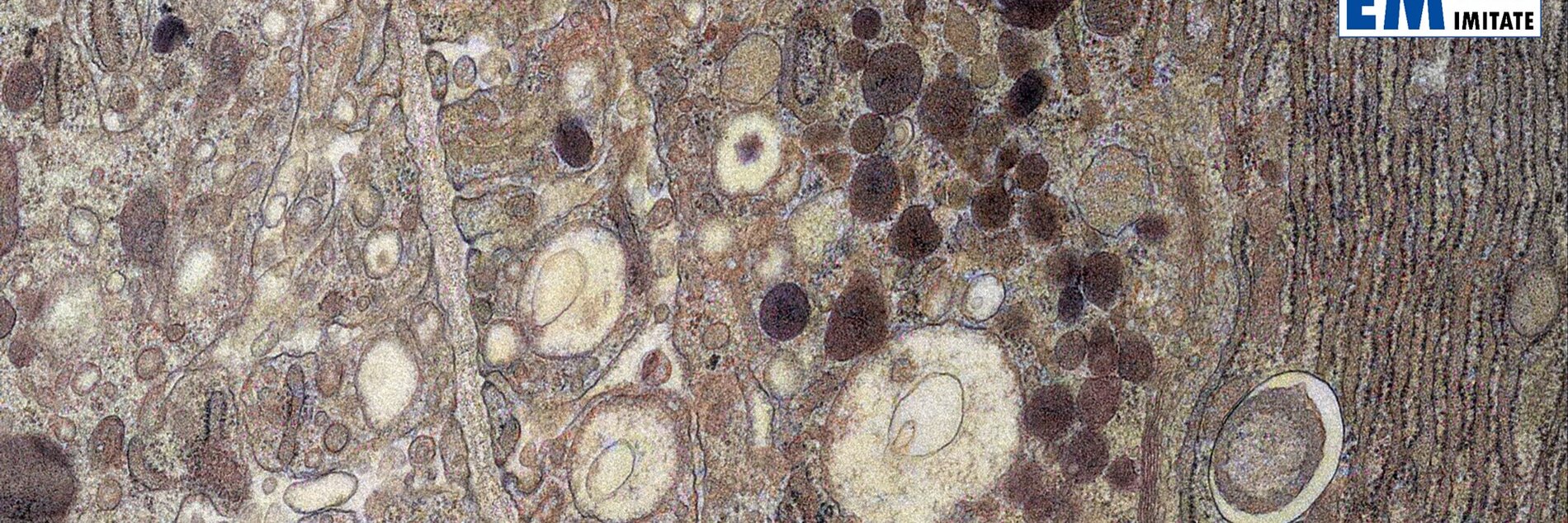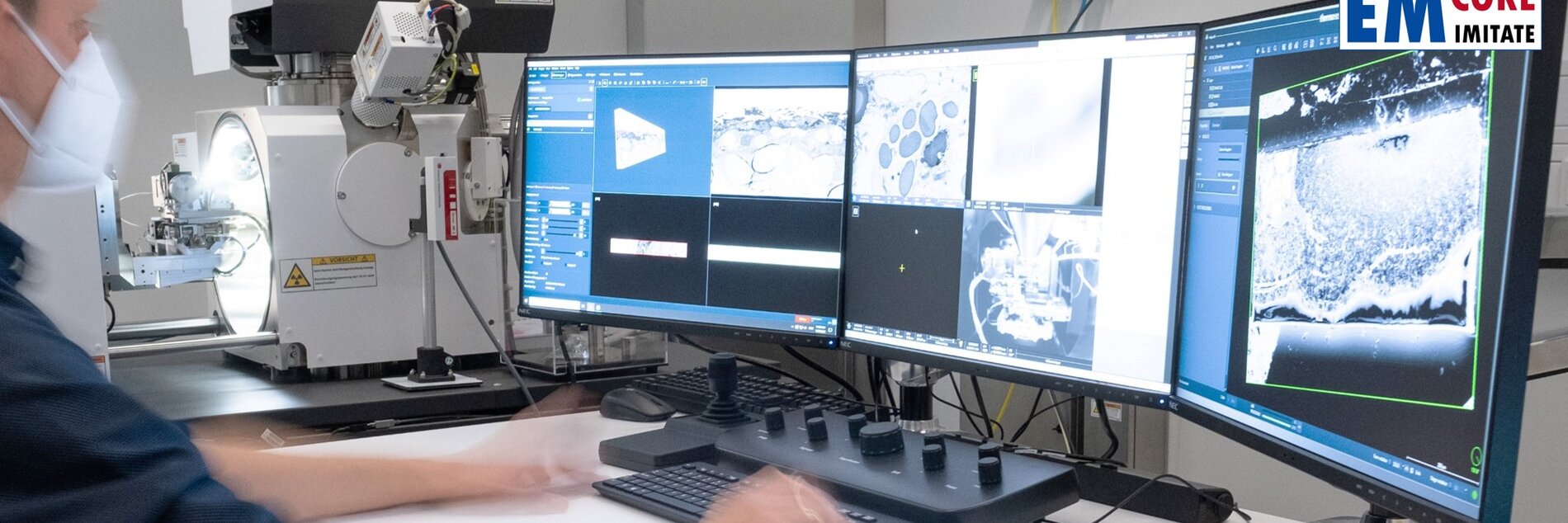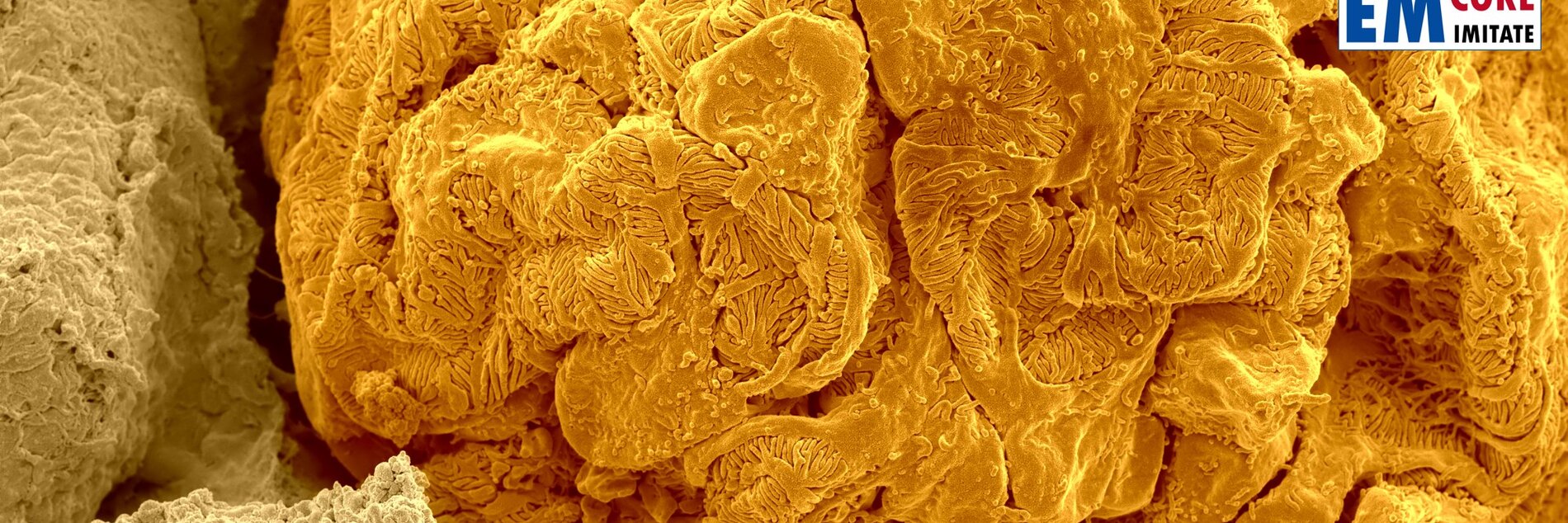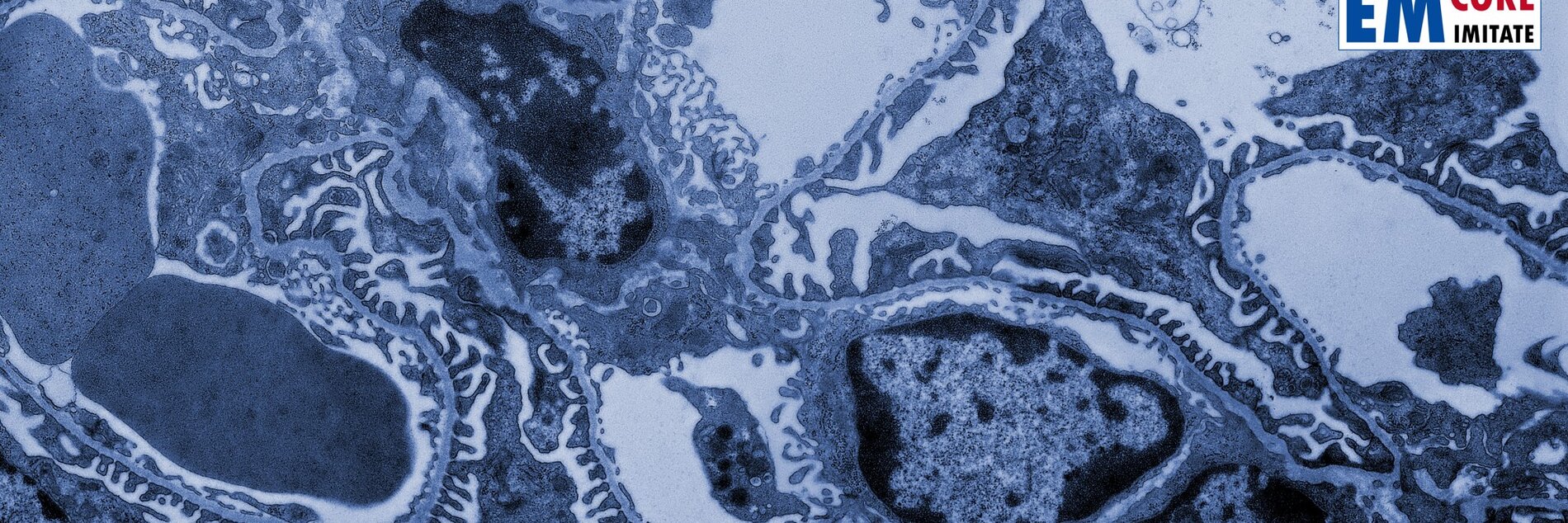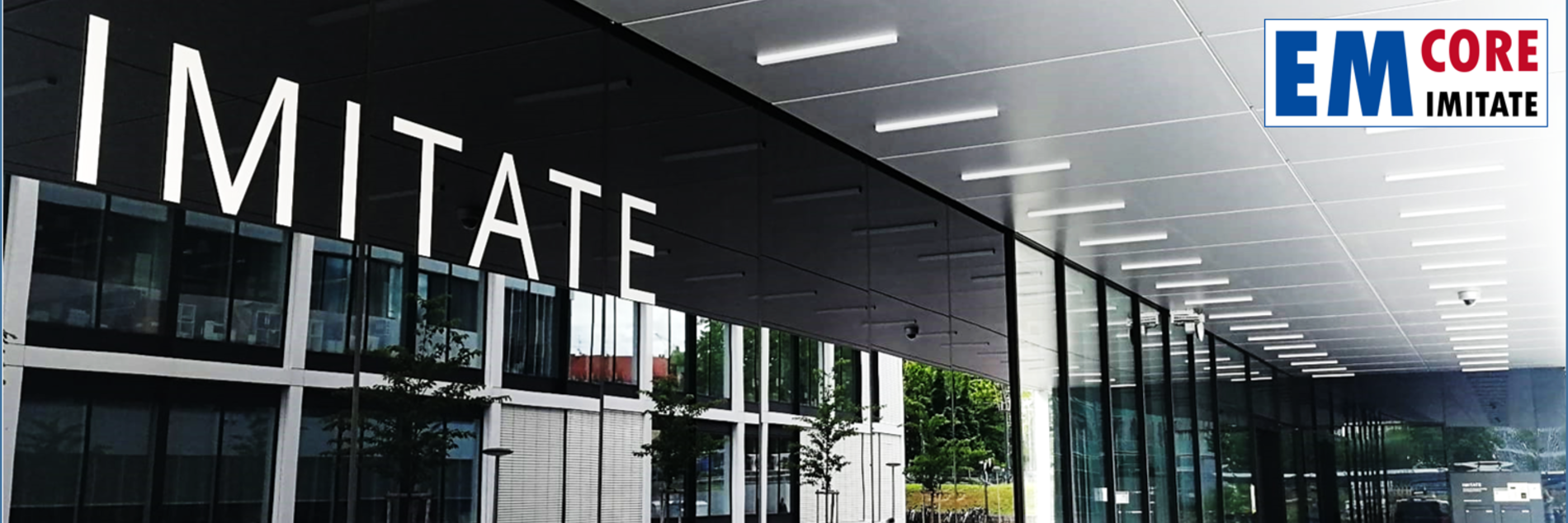EMcore
Core Facility für ElektronenmikroskopieDie EMcore bietet umfassende elektronenmikroskopische Expertise für Ihre Forschung. Als Teil des Institute for Disease Modeling and Targeted Medicine (IMITATE) steht unsere Infrastruktur sowohl internen Arbeitsgruppen als auch externen Partnern zur Verfügung.
Unser Angebot:
- Individuelle Methodenberatung zur optimalen Beantwortung Ihrer Forschungsfrage
- Vollständiger EM-Workflow von der Probenvorbereitung bis zur Datenaufnahme
- Einarbeitung an den Geräten für eigenständiges Arbeiten bei umfangreicheren Projekten
Techniken und Methoden:
- Transmissions- und Rasterelektronenmikroskopie (TEM, REM)
- Immun-Elektronenmikroskopie
- Serielle Blockflächen-Rasterelektronenmikroskopie (SBF-REM)
- Array-Tomographie-Rasterelektronenmikroskopie
- Elektronentomographie
- Kryopräparationstechniken (Kryosubstitution, Kryo-Ultramikrotomie)
Durch unsere enge Zusammenarbeit mit der BiMiC unter Leitung von Dr. PD. Franck Ditengou maximieren wir den Erkenntnisgewinn durch die Kombination von Licht- und Elektronenmikroskopie.
Kontaktieren Sie das EMcore-Team für Terminvereinbarungen, weitere Informationen und Nutzerordnung!
UNIVERSITÄTSKLINIKUM FREIBURG
Ag Walz Innere Med IV
IMITATE
EM Core Facility
Breisacher Str. 113 · 79106 Freiburg
Tel: +49 761 270 63021
Email: martin.helmstaedter@uniklinik-freiburg.de

UNIVERSITÄTSKLINIKUM FREIBURG
Ag Walz Innere Med IV
IMITATE
EM Core Facility
Breisacher Str. 113 · 79106 Freiburg
Tel: +49 761 270 63179
Email: severine.kayser@uniklinik-freiburg.de
Publikationen der EMcore
-

2025 - A Drosophila model for Dent’s disease reveals impaired ER export of Cubilin as pathogenic mechanism
-

2025 - The slit diaphragm in Drosophila features a bi-layered, fishnet-like architecture
-

2025 - Spontaneous Calcium Bursts Organize the Apical Actin Cytoskeleton of Multiciliated Cells
-

2025 - Acute suppression of mitochondrial ATP production prevents apoptosis and provides an essential signal for NLRP3 inflammasome activation
-

2024 - Linking Basement Membrane and Slit Diaphragm in Drosophila Nephrocytes
-

2024 - RNA damage compartmentalization by DHX9 stress granules
-

2024 - ADP-Ribosylation Factor-Interacting Protein 2 Acts as a Novel Regulator of Mitophagy and Autophagy in Podocytes in Diabetic Nephropathy
-

2023 - Kif21a deficiency leads to impaired glomerular filtration barrier function.
-

2023 - Transcriptional regulation by the NSL complex enables diversification of IFT functions in ciliated versus nonciliated cells.
-

2023 - A YAP/TAZ-ARHGAP29-RhoA Signaling Axis Regulates Podocyte Protrusions and Integrin Adhesions.
-

2022 - A slit-diaphragm-associated protein network for dynamic control of renal filtration
-

2022 - Nephrotic Syndrome Gene TBC1D8B is Required for Endosomal Maturation and Nephrin Endocytosis in Drosophila
-

2022 - Selective endocytosis controls slit diaphragm maintenance and dynamics in Drosophila nephrocytes
-

2022 - mTOR-Dependent Autophagy Regulates Slit Diaphragm Density in Podocyte-like Drosophila Nephrocytes
-

2022 - Inhibition of endoplasmic reticulum stress signaling rescues cytotoxicity of human apolipoprotein-L1 risk variants in Drosophila
-

2022 - α-Parvin Defines a Specific Integrin Adhesome to Maintain the Glomerular Filtration Barrier
-

2022 - Scaffold polarity proteins Par3A and Par3B share redundant functions while Par3B acts independent of atypical protein kinase C/Par6 in podocytes to maintain the kidney filtration barrier
-

2022 - Microridge-like structures anchor motile cilia
-

2022 - BECLIN1 Is Essential for Podocyte Secretory Pathways Mediating VEGF Secretion and Podocyte-Endothelial Crosstalk
-

2021 - 3D Adipose Tissue Culture Links the Organotypic Microenvironment to Improved Adipogenesis
-

2021 - A Novel Model for Nephrotic Syndrome Reveals Associated Dysbiosis of the Gut Microbiome and Extramedullary Hematopoiesis
-

2021 - EPB41L5 controls podocyte extracellular matrix assembly by adhesome-dependent force transmission
-

2021 - SRGAP1 Controls Small Rho GTPases To Regulate Podocyte Foot Process Maintenance
-

2021 - Quantification of nanoscale forces in lectin-mediated bacterial attachment and uptake into giant liposomes
-

2021 - Notch signaling induces either apoptosis or cell fate change in multiciliated cells during mucociliary tissue remodeling
-

2020 - Posttranslational insertion of small membrane proteins by the bacterial signal recognition particle
-

2020 - ADCK4 Deficiency Destabilizes the Coenzyme Q Complex, Which Is Rescued by 2,4-Dihydroxybenzoic Acid Treatment
-

2020 - A molecular mechanism explaining albuminuria in kidney disease
-

2019 - TBC1D8B Mutations Implicate RAB11-Dependent Vesicular Trafficking in the Pathogenesis of Nephrotic Syndrome
-

2019 - Biallelic loss of function variants in PPP1R21 cause a neurodevelopmental syndrome with impaired endocytic function
-

2019 - Cilia-localized LKB1 regulates chemokine signaling, macrophage recruitment, and tissue homeostasis in the kidney


